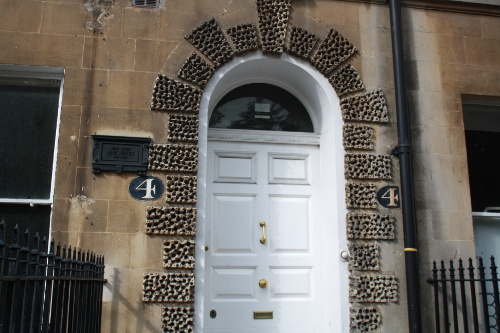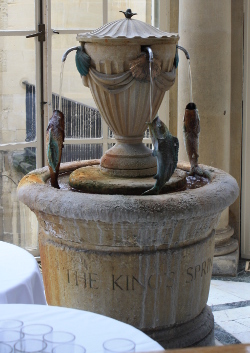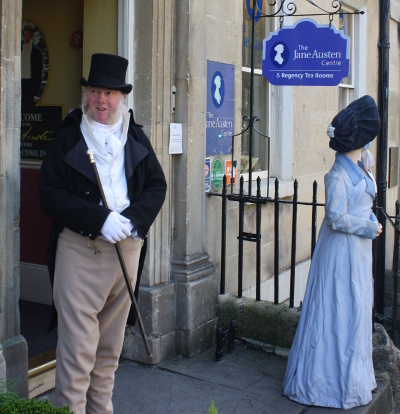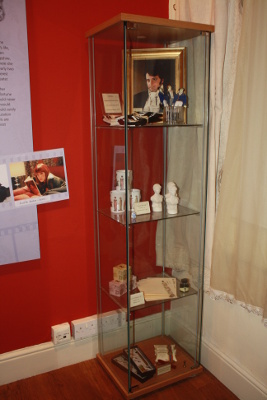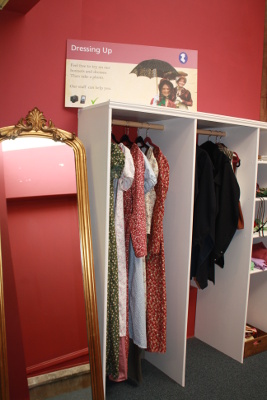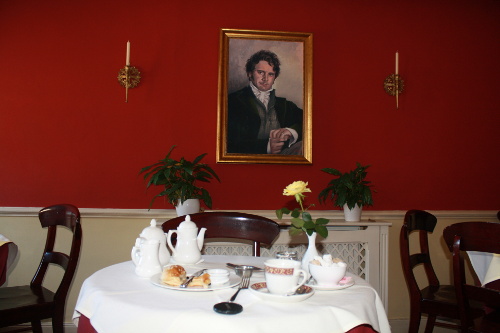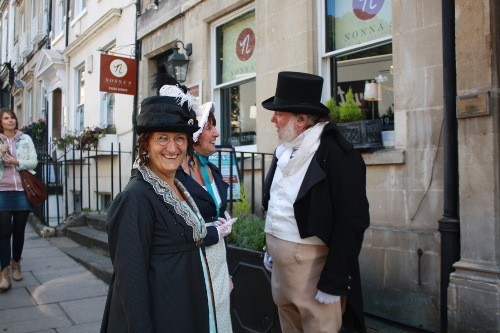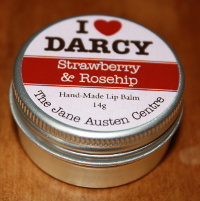|
Jane Austen’s association with Bath is significant and enduring. She lived in the city from 1801 to 1806, and it features as a major setting in two of her novels, Northanger Abbey and Persuasion. Bath capitalizes on its connection with the author through an extremely well developed tourist industry. The city’s fond appropriation of Austen, however, is ironic, considering her personal views of Bath and the depiction of the social values associated with it in her fiction. How Austen felt about the city, and imagined it in her novels, will be considered in this essay in light of the significance Bath possesses as a site of pilgrimage for Janeites in the twenty-first century.1 I wish to argue, following a line through from D. W. Harding to Claudia Johnson to Edward Neill, that Austen does not offer us a conservative world to find refuge in; her politics are “interrogative,” probing class and gender norms (Johnson xxi).2 This skepticism is particularly apparent in Austen’s depiction of Bath society in her work. Yet the city’s cultural appropriation of Jane does not encourage such an interpretation of their most famous former resident; instead, it plays on a nostalgic perception of Regency England that makes Jane safe.
After sketching out Austen’s experiences of Bath, I will examine how she writes the city. In particular, the social critique Austen offers in the Bath scenes in Persuasion forms an interesting counterpoint to the way the city packages Jane now in heritage terms, which I will go on to consider in the final part of the essay. One definition the OED offers of heritage is useful for my present purposes: “the preservation or exploitation of local and national features of historical, cultural, or scenic interest, esp. as tourist attractions.” It is Bath’s exploitation of Austen and her work that I am interested in, specifically the industry’s packaging of her to appeal to a mass commercial audience desiring a particular kind of experience. This experience “permit[s] a kind of time-travel to the past” valued precisely because it “preserve[s] an all but vanished Englishness or set of ‘traditional’ values” (Lynch, “Cult” 116). Austen engaged with her society critically (as I will show in the close readings that follow); however, some twenty-first-century Janeites want to live in a comfortable, reassuring version of her world (as I will suggest in the final part of the essay). The tourist industry in Bath exploits this desire amongst her fans. The nostalgic, escapist view of Jane’s society it promotes facilitates an alternative to Austen’s own interrogative response to her world, an irony that would not be lost on her.
Heritage Bath offers, as Robert Hewison might say, a seductively “bogus history” of Austen (144). The author’s world is interpreted as a cosy, luxurious, and reassuring place to indulge her fans: in this interpretation the tourist industry “conserves” Austen and her society, creating a different context for her life and fiction. Hewison distinguishes between conservation and preservation as follows: preservation means maintaining an object or building “in a condition defined by its historical context”; conservation “creates a new context” for it (98), resulting in the construction of an “imaginary past” for the object (99). I will draw on Hewison’s important work in the course of my consideration of heritage Bath’s promotion of Jane’s domain as an imaginary ideal, a world where rich people wear beautiful clothes and everyone knows his or her place.
Furthermore, the reconstruction, or conservative conservation, of Jane in heritage Bath provides more evidence to support Harding’s argument that Austen’s work is “read and enjoyed by precisely the sort of people whom she disliked,” namely readers who fail to perceive the extent and direction of her satire (167). According to Harding, Austen “is a literary classic of the society which attitudes like hers, held widely enough, would undermine” (167). By transfiguring the edgy Austen Harding sees into unthreatening heritage Jane, the tourist industry in Bath profits and Janeites feel soothed and comforted. The discussion that follows contrasts Austen’s depiction of Bath with the city’s marketing of Jane in the twenty-first century to bring to light some of the multiple ironies the juxtaposition reveals. The exposure of these ironies will also serve to indicate how relevant Harding’s 1940 essay remains: the city’s marketing of Jane provides an interesting commercial twist on the mismatch between the “attentive” reader of the novels (Harding 169) and the twenty-first century consumer of Jane Austen’s Bath.
“[T]he appearance of [Bath] was all vapour, shadow, smoke & confusion”: Austen’s responses to Bath
Georgian Bath was the place to visit during the fashionable season, to bathe and drink the water, enjoy all manner of entertainments, and to observe and be observed by all.3 Austen visited the city twice when she was in her early twenties.4 She, her mother, and her sister stayed with her wealthy aunt and uncle, the Leigh-Perrots, in No. 1 Paragon in November 1797; then Austen and her mother sojourned with her brother Edward and family in No. 13 Queen Square in May and June 1799. Austen’s letters to her sister Cassandra during the 1799 visit suggest she enjoyed many of Bath’s pleasures, such as public breakfasts, concerts with fireworks, and plays. She was clearly, however, beginning to tire of the city by 19 June: “The Play on Saturday is I hope to conclude our Gaieties here, for nothing but a lengthened stay will make it otherwise.” For Austen, the stay was agreeable based on the assumption that it did not go on too long. This second visit was probably useful because at this point she was writing a version of Northanger Abbey.5
At the end of 1800 Austen’s parents made the decision to move to Bath on the grounds of retirement and health, a decision that shocked their daughter profoundly: a relative reported she fainted (Tomalin 169; Byrne 15). The letters that survive from this period from Austen to Cassandra suggest she tried to make the best of it, but her sister destroyed several letters that may have expressed much more bitterly candid views, as Tomalin speculates (169). Of the remaining letters, one in particular suggests a positive response to the change: “I get more & more reconciled to the idea of our removal. We have lived long enough in this Neighbourhood, the Basingstoke Balls are certainly on the decline, there is something interesting in the bustle of going away, & the prospect of spending future summers by the Sea or in Wales is very delightful” (3-5 January 1801).6 It is significant that Austen does not mention Bath here; instead she turns her attention to the possibility of seaside holidays due to their proximity to the Welsh and South-West coastlines. The move to Bath took place in May 1801, and after staying with the Leigh-Perrots, the family settled in No. 4 Sydney Place.7
Austen liked this area of town due to its proximity to Sydney Gardens, but the letters written during the period of arrival in Bath do not express the delight and wonderment her heroine of Northanger Abbey, Catherine Morland, feels. Austen remarks, “The first veiw of Bath in fine weather does not answer my expectations; I think I see more distinctly thro’ Rain.—The Sun was got behind everything, and the appearance of the place from the top of Kingsdown, was all vapour, shadow, smoke & confusion” (5-6 May 1801).
In other letters, Austen describes attending balls in the Upper Rooms. Her description of a ball does not evoke the elegance and glamor of dancing in the Upper Rooms that a twenty-first-century audience might imagine: highlights include observing a “contentedly silly” “Adultresss” and watching a Mrs. Badcock “run round the room after her drunken Husband.—His avoidance, & her pursuit, with the probable intoxication of both, was an amusing scene” (12-13 May 1801). The source of amusement lay in observing what she saw as the vices and dissipations of individuals in her social milieu. In the same letter, Austen comments upon “Another stupid party last night; perhaps if larger they might be less intolerable.” Austen’s response to her social environment in Bath is something like Mr. Bennet’s to his wife in Pride and Prejudice: both deploy satirical, detached observation as a way of surviving their situations. The idea of Austen’s parents putting her and Cassandra publicly on display in order to catch husbands probably occurred to their daughters too, increasing their distaste.8 Austen’s parents married in Bath, and it is evident from the novels, from Isabella Thorpe’s romantic machinations in Bath in Northanger Abbey to Admiral Croft’s recommendation that Wentworth come to the city to find a wife in Persuasion, that Bath was a marriage market.
The idea of being on show, the sense of the artificialities associated with public life, as well as the ephemeral and meaningless nature of friendships formed, all contributed to Austen’s feelings of alienation. After going on two walks with a Mrs. Chamberlayne, for example, Austen remarks, “so ends our freindship, for the Chamberlaynes leave Bath in a day or two” (26-27 May 1801). It appears that Bath offered Austen no sense of stability and security. This instability impaired her creativity: it is an interesting irony that the city we associate with the writer and her fiction was responsible for a creative hiatus during her residence there. Austen most likely had the manuscripts of her three written novels with her in Bath, but it appears she edited and wrote very little fiction during her residence: Tomalin suggests the “ejection from Steventon . . . depressed her deeply enough to disable her as a writer” (173).
After the extremely productive mid to late 1790s (by 1800 Austen had versions of what are now known as Pride and Prejudice, Sense and Sensibility, and Northanger Abbey), when living in Bath, she only made some revisions to the version of Northanger Abbey she had already drafted, started a new novel, The Watsons, but then abandoned it forever.9 This unfinished novel is pretty bleak: at the point Austen stopped writing, the heroine Emma Watson is described as an unwelcome burden to her family. The sense of the heroine’s emotional isolation within her own family may well have been too much for Austen to bear in light of her own circumstance, an unmarried encumbrance to her parents. Only when Austen was finally settled in a home back in rural Hampshire, this time Chawton, from 1809 until her death was she able to match her earlier period of creativity, writing Mansfield Park, Emma, and Persuasion there.10 In a letter to her sister written some two years after they left Bath and before they moved to Chawton, Austen digresses from the subject under discussion to interject in a jarringly significant way: “It will be two years tomorrow since we left Bath for Clifton, with what happy feelings of Escape!” (30 June-1 July 1808). Evidently time and distance did nothing to soften her views of the city.
Writing Bath: Austen’s topographies
So how is Bath imagined in the fiction in light of Austen’s own experiences?11 Austen’s portrayal of Catherine Morland’s extreme delight in Bath was most likely informed by the writer’s early visits there, not when the city was her actual home. Catherine declares: “‘I really believe I shall always be talking of Bath, when I am at home again—I do like it so very much. . . . Oh! who can ever be tired of Bath?’” (79). These are, however, Catherine’s sentiments, not Austen’s, and the narrator has a playful and at times quite affectionately critical attitude towards her heroine. As well as being characterized as an urban space that provides pleasure and excitement, Bath is associated with idle dissipation and dangerous leisure. Catherine’s naïveté and gullibility are highlighted in her insistence on reading life as a gothic novel, imagining General Tilney has either murdered or locked up his wife. After Catherine realizes her mistake, she reflects that Bath was the place that enabled her to feed her appetite for this kind of fiction: “She saw that the infatuation had been created, the mischief settled long before her quitting Bath, and it seemed as if the whole might be traced to the influence of that sort of reading which she had there indulged” (200). Furthermore, Bath enables scandalous intrigues, such as Isabella and Captain Tilney’s. The city is just the place for the idle and brainless, whose minds are only capable to fixating on gowns and bonnets (Mrs Allen), the naïve and thoughtless (Catherine), or the vain (Isabella). Indeed, Catherine is chastised by her mother on her return to her home village in Wiltshire: “‘Your head runs too much upon Bath; but there is a time for every thing—a time for balls and plays, and a time for work. You have had a long run of amusement, and now you must try to be useful’” (240).
It is in the mature Persuasion, however, that Austen sustains her social critique. That novel features a heroine—Anne Elliot—who can see no amusement in Bath; her disinclination to move there mirrors Austen’s own.12 It appears that when Austen was at a geographical and temporal distance from Bath, she could write with poignancy on the feelings of dislocation and alienation it engendered in her fictional creation Anne without feeling debilitated by it in the way she was when writing The Watsons. Austen’s narrator is much closer to her heroine in Persuasion than in Northanger Abbey: the novel insistently focalizes through Anne, and the narrator clearly desires the implied reader to admire her heroine’s sweet temperament, intelligence, and stoic endurance of suffering. Anne is the moral center of the novel, and it is her view that counts for the implied reader.
Much of the novel centers on Anne’s experiences of Bath. Due to her father’s improvident behaviour, the family decamps to the city and rents out their home, Kellynch-hall; earlier, Anne has spent three years at school there and a season in the city with Lady Russell. On hearing that Anne’s family is to move, we learn that Anne “disliked Bath, and did not think it agreed with her—and Bath was to be her home” (14). When Lady Russell and Anne enter the city, the narrator emphasizes further Anne’s antipathy, contrasting her view of Bath with her friend’s:
When Lady Russell . . . was entering Bath on a wet afternoon, and driving through the long course of streets from the Old Bridge to Camden-place, amidst the dash of other carriages, the heavy rumble of carts and drays, the bawling of newsmen, muffin-men and milk-men, and the ceaseless clink of pattens, she made no complaint. No, these were noises which belonged to the winter pleasures; her spirits rose under their influence. . . .
Anne did not share these feelings. She persisted in a very determined, though very silent, disinclination for Bath; caught the first dim view of the extensive buildings, smoking in rain, without any wish of seeing them better; felt their progress through the streets to be, however disagreeable, yet too rapid; for who would be glad to see her when she arrived? (135)
Lady Russell looks forward to the “winter pleasures” of Bath; Anne can only feel “disinclination” for the city. It offers her no prospect of pleasure or enjoyment, and she knows her father and sister have no desire to see her there, articulated through the free indirect discourse of “who would be glad to see her when she arrived?” The description of the city, focalized through Anne, perhaps draws on Austen’s own negative experience of arriving in Bath, articulated in her 5-6 May 1801 letter (“the appearance of the place . . . was all vapour, shadow, smoke & confusion”).
Part of Anne’s “disinclination for Bath” is due to its obsessive attention to rank. Here, as ever, she is at odds with her father and sister, who see no value in her point of view. Sir Walter and Elizabeth toady to Lady Dalrymple and Miss Carteret to ensure that the cousinly association preserves their status. Anne is “ashamed” of her family’s behavior towards their cousins because they are “nothing,” possessing “no superiority of manner, accomplishment, or understanding” (150). Yet all that matters to her family is that they associate with people of rank during the “elegant stupidity of [their] private parties”: such socializing leaves Anne in “a state of stagnation” (180).
The novel signifies the importance of class hierarchies through the different lodgings families select. The Musgrove girls’ desire to be in “‘a good situation—none of your Queen-squares for us!’” (42) shows how important one’s accommodation is in maintaining a dignified social position. Parker has noted how class position and an exalted geographical position go hand in hand: the higher north one’s lodgings are, the higher one is on the social rung.13 Sir Walter makes it clear how important location is when enquiring if the Crofts will lodge somewhere that is suitable for the Elliots to visit; irrespective of this criterion, Elizabeth deems them too socially inferior to present to Lady Dalrymple, saying they “‘had better leave the Crofts to find their own level. There are several odd-looking men walking about here, who, I am told, are sailors. The Crofts will associate with them!’” (166). The Crofts are, of course, highly valued by Anne and are more worthy residents of Kellynch than the baronet, as I will go on to examine. So much of the exposure of aristocratic folly occurs in the Bath scenes that the city appears to be synonymous with upper-class privilege and social snobbery.
Austen adroitly juxtaposes these cruel, powerful, society characters with Anne and other individuals marginalized by this oppressive social system in the Bath scenes. Anne’s status within her family is, as Roger Sales has remarked, “little better than a servant” (“In Face” 189); the emphasis on the disenfranchised in the novel is also echoed very significantly in the Mrs. Smith subplot. Anne does not observe the social niceties expected of her in this highly socially stratified society; she prefers to spend her time with her poor and chair-bound school friend who lodges in Westgate Buildings. Mrs. Smith cannot afford a servant and is excluded from exalted society. Furthermore, Mrs. Smith’s politics are decidedly pro-plebeian. She views Nurse Rooke as a “‘shrewd, intelligent, sensible woman,’” who is “‘infinitely superior’” to the better born and better educated (155).
Sir Walter is horrified that Anne maintains the association with Mrs. Smith. His response is characteristic: “‘who is Miss Anne Elliot to be visiting in Westgate-Buildings?—A Mrs. Smith. . . . Upon my word, Miss Anne Elliot, you have the most extraordinary taste! Every thing that revolts other people, low company, paltry rooms, foul air, disgusting associations are inviting to you’” (157). Sir Walter repeatedly emphasizes Anne’s family name and the class superiority it signifies in marked contrast to Mrs. Smith’s social anonymity, exemplified through her lowly name and lodgings. The conversation serves to suggest that Sir Walter almost views Anne’s friend as a representative of another species. Neill argues, controversially, that “Sir Walter Elliot’s sterling incapacity and conceited self-regard seem to be correlated with his absurd over-emphasis on the hereditary principle itself, so that there is a certain rapport with Tom Paine’s attack on the repressive and destructive effects of the ‘hereditary’ view of society” (116). Although I hesitate to align Austen with Painean politics, it is important to note that Sir Walter’s excessive emphasis on birth and beauty is thrown into sharp relief by Anne’s more meritocratic worldview. Mr. Elliot, in compliance with Sir Walter, argues that only “‘Birth and good manners’” matter; Anne quietly insists that her idea of good company is being surrounded by “‘clever, well-informed people’” (150). There is no mention of birth or aristocratic connections in Anne’s definition.
Prior to the Bath move, Anne has been socializing with “clever, well-informed people” from the Navy fraternity, those who have earned their place in society. The critique of class privilege is crystallized through the juxtaposition of the indolent aristocracy with the meritocratic Navy, illustrated earlier in the novel when Anne reflects that Sir Walter deserves to lose Kellynch-Hall and that the Crofts are more worthy residents. Anne “could not but in conscience feel that they were gone who deserved not to stay, and that Kellynch-hall had passed into better hands than its owners’” (125). This is a very significant moment: Anne feels her father has lost his hereditary right to the estate; instead she is “in favour of a system in which merit and distinction are rewarded” (Sales, Jane Austen 175). The Navy holds out such promise in the novel for its emphasis on self-determination and reward of merit in contrast to the lazy self-aggrandizement of the unjustly privileged classes.14
At the end of the novel the narrator notes that Mary is consoled to think that “Anne had no Uppercross-hall before her, no landed estate, no headship of a family” (250), yet this deficiency causes Anne no unhappiness. The landed classes and the power and privilege associated with them are rejected in favor of a marriage for love. Here we can see evidence of Austen writing ostensibly conservative fiction but at the same time subjecting “its most cherished mythologies to interrogations from which it could not recover” (Johnson, Jane Austen 166). In its powerfully condemnatory portrayal of the Bath-residing aristocrats, Persuasion is Austen’s most trenchant attack on the ruling class. Austen mobilized her experiences of Bath to provide a scathing critique of the individuals that formed part of the society there, and in so doing she showed how the “people she hated were tolerated, accepted, comfortably ensconced in the only human society she knew; they were, for her, society’s embarrassing comment on itself” (Harding 172). This perspective is worth reflecting upon in light of how Bath appropriates the writer now.
“Jane Austen’s Bath”: the heritage industry’s appropriation of Jane
In this final section I will consider the ways in which Bath “conserves” Austen, creating quite another context for her. While Austen exposes the spiritual poverty of her social world in the portrayal of Bath society in Persuasion, today she is rewritten as heritage Jane, and this type of marketing is big business for the city. The Visit Bath website, Bath’s official tourism site, contains a substantial section entitled “Jane Austen’s Bath,” and it is evident that the author contributes very significantly to the city’s tourist economy.15 The syntax suggests Bath belongs to Jane, but the city has appropriated Austen for its own commercial ends.
Fans can download the Audio Tour “In the footsteps of Jane Austen” to an MP3 player and print out and follow the Tour Route Map around Bath, stopping at places associated with Jane Austen. The tour is divided into chapters situated around a particular landmark. The audio guide makes use of Catherine Morland’s laudatory exclamations about Bath in particular. Yet of the fifteen landmarks chosen, some of them do not develop the connection with Austen as well as they might. For example, in Chapter 3, Sally Lunn’s House, the tour guide speculates that “Jane Austen would probably have been familiar with the Sally Lunn bun.” Austen makes a reference in her 3-5 January 1801 letter to her sister about how Bath buns might disorder her stomach (she wryly jokes that might be the way to keep the cost of her food down to save her parents’ expense), but these are quite a different type from the Sally Lunn bun; there is no evidence that she visited the house or ate one of the buns. The Austen tourist machine is utilized to encourage visitors to frequent Sally Lunn’s house.
The map points out the Jane Austen Centre, encouraging visitors to take a trip there to “discover much more about the life of Jane in Bath and take refreshments at the Regency tearoom.”16 This museum is located at 40 Gay Street, a few doors down the street from Austen’s former residence. The Jane Austen Centre embraces the appetite for all things Regency: the period-dressed gent at the door, Martin Salter, welcomes all visitors, posing for photographs.17
The tour guides and Regency Tea Room staff wear period dresses and mob caps. The Centre is a major tourist attraction for visitors from all over the world.18 In 2013 admission cost £8.00 per adult and included a ten-minute talk followed by access to the exhibition area. Receipts for anything purchased in the Centre included Catherine Morland’s question, unattributed, “‘Oh, who could ever be tired of Bath?’”
The guide I listened to was extremely knowledgeable, and she alluded to Austen’s evolving attitude to Bath via the early and late fiction. Also, the video documentary focusing on Austen and Bath shown in the exhibition area did state that a “less than rosy picture” emerges if looking for the “truth” of her experience of the city. Whether most visitors register this reservation is questionable, particularly given the fact that the museum markets Jane’s world along heritage television and film fantasy lines—as a place that we all would really like to return to—so persistently elsewhere. (I was the only one of the large group who sat down and watched the whole documentary.) The exhibition includes a comparatively large space devoted to adaptations and memorabilia, as well as providing opportunities for visitors to dress up in period costume.
Various displays in the Jane Austen Centre
Furthermore, the Gift Shop stocks a bewildering array of paraphernalia, which can also be purchased online, such as “I love Darcy Strawberry & Rosehip Lip Balm” (£4.99) and key rings.
The Jane Austen Centre appeals to Janeites by including as much merchandise associated with spin-offs as they desire, for example, the popular book Jane Austen’s TV and Film Locations Guide by Marcia Kennedy-McLuckie; other featured stock includes a large number of the film and television adaptations and soundtracks. After interviewing a number of Janeites, a journalist for the Sunday Telegraph, Julia Llewellyn Smith, stated, “Every Janeite I speak to cites a screen version . . . as the spark for their passion”: the Jane Austen Centre is wise to this interest and markets its retail items accordingly. Lynch argues that “Austen movies over the last decade have almost overshadowed the books” (“Cult” 117): in the Jane Austen Centre the adaptations rival the books for supremacy.
Sales has discussed how Austen’s world has been marketed as a heritage product by the television industry that has produced “nostalgic visual images” (Jane Austen 19): the Regency Tea Room in the Jane Austen Centre capitalizes in various ways on the phenomenal success of the 1995 BBC adaptation of Pride and Prejudice starring Colin Firth as Darcy and Jennifer Ehle as Elizabeth Bennet. A large portrait of Colin Firth as the Darcy who fuelled Darcymania hangs in the Regency Tea Room.19
Visitors in 2013 could order the “Champagne Tea with Mr. Darcy” for £28 per person, which included sandwiches, scones, cakes, tea, and Duval-Leroy Brut champagne—but no Darcy. The 2013 Jane Austen Festival in Bath included a trip to to the nearby Wiltshire village of Lacock, where the Meryton scenes of the 1995 BBC adaptation were filmed.
The Jane Austen Centre operates the annual Jane Austen Festival. The festival has been running since 2001: the 2013 annual event was a nine-day extravaganza (13-21 September) of eighty-three events including the traditional Grand Regency Costumed Promenade. In 2009, the Festival broke the Guinness Book of Records for the “Largest Gathering of People Dressed in Regency Costumes”: 409 people were recorded in total (“Festival History,” JaneAusten.co.uk).
In 2013, to tie in with the bicentenary of Pride and Prejudice, the Netherfield Ball was a precursor to the annual festival. Tickets cost £56 per person. The actual festival included the Regency Costumed Masked Ball on 20 September. Tickets for that event cost £86 per person; guests, as ever, dressed in period costume. Janeites like to recreate the look as accurately as possible: one declares, “I really, really love the costumes and I own an embarrassing number—about 50” (qtd. in Smith). This kind of devotion does not come cheap. Regency attire is an expensive business: ball gowns are available to buy from the Jane Austen Gift Shop from £360 to £480.20 Smith wrote her article just before the Netherfield Ball, which some of her interviewees attended. One of the interviewees, Claire-Violet Hanley, suggests that her status as Janeite has given her passport to another world: “‘I’ve danced in fresco-painted villas in Italy. I’ve spoken to aristocrats. I’ve been invited to palaces. Everything that used to only be romantic in a fictional sense has become real’” (qtd. in Smith). It appears these Janeites are interested in recreating their version of the aristocratic world Austen depicted; clearly they do not read her as a “condition-of-England writer” diagnosing the ills of her society (Sales, Jane Austen xi).
The activities of the Jane Austen Centre are fascinating to consider in light of work completed by cultural historians such as Robert Hewison and Patrick Wright in the last few decades. Writing about the growth of heritage in Thatcherite Britain, Hewison argues that it marks a culture of decline:
I criticise the heritage industry not simply because so many of its products are fantasies of a world that never was; not simply because at a deeper level it involves the preservation, indeed reassertion, of social values that the democratic progress of the twentieth century seemed to be doing away with, but because, far from ameliorating the climate of decline, it is actually worsening it. If the only new thing we have to offer is an improved version of the past, then today can only be inferior to yesterday. (10)
Hewison is not anti-history, but he does not consider the way Britain markets itself as one big museum to be history; he fears that if we advertise ourselves only in terms of heritage, our own present culture might be stifled. When he wrote his book in the 1980s, there were over 2100 museums in the UK, and numbers had doubled since the early 1970s; now there are 2500 according to the Museums Association, of which the Jane Austen Centre is just one.21
Hewison’s concern with heritage is that it does not recall the past; instead, it plays on a desire to live in it. Bath’s marketing of Jane allows Janeites to act on this desire: the decision of so many to don their Regency costumes in a nine-day annual extravaganza satisfies a yearning to escape into a world of privilege and pleasure. This recreation of a space for the privileged classes provides a “conservative recuperation” of Austen (Neill 1). Deidre Lynch makes the important point that to some “Austen loving looks symptomatic of a bad case of cultural cringe: the activities of a not-yet-decolonized mind. Yet Austen’s ‘Englishness’ need not be taken as an article of faith. We cannot always count on either her rootedness in English literature’s Great Tradition or her usefulness to the heritage cinema that promotes past times and old money” (“Introduction” 13).
The Bath tourist industry promotes Jane in this heritage cinema fashion, despite Austen’s questioning of the value of aristocrats like Sir Walter to society and her challenge to the status quo. In fact, Bath “conserves” Jane in ways that most likely elicit “cultural cringe” from readers of the novels who are alert to the powerful social critiques they offer. The tourist trade’s promotion of Jane encourages a sentimental reinterpretation of her world rather than a critical dialogue with it. In doing so it makes a lot of money but does little to accommodate the “attentive” reader of Austen’s novels that Harding imagines.
Notes
I would like to thank Susan Allen Ford and the anonymous reader for their extremely helpful comments on an earlier version of this essay.
1. For discussion of the “Janeite”, defined as “an enthusiastic admirer of Jane Austen,” see Lorraine Hanaway (28). For extended discussions see Claudia Johnson, “Austen Cults and Cultures” and “The Divine Miss Jane”; Deidre Lynch, “Cult” and “Introduction”; Claire Harman, especially chapters 5-7.
2. D. W. Harding was one of the first critics to point out Austen’s subversiveness. I will consider Harding’s argument in more detail as the essay continues. Marilyn Butler offered the first extended consideration of Austen’s engagement with political ideologies but argues that Austen’s politics are anti-Jacobin, reflecting her class’s Tory values. Claudia Johnson responded by suggesting Butler “denies Austen the dignity of being a warrior of ideas” (Jane Austen xviii). Johnson suggests that Austen critiqued institutions and ideologies, and in so doing “defended and enlarged a progressive middle ground” (166). Most recently, Edward Neill has argued for Austen’s status as subversive. My reading of Austen’s politics is closest to Johnson’s.
3. For information about Bath and its relevance for Austen, see Paula Byrne, Keiko Parker, and Allison Thompson. For extended discussion of Austen’s engagement with Regency attitudes, see Roger Sales’s Jane Austen and Representations of Regency England.
4. I draw on the letters and Deirdre Le Faye’s endnotes for the following information about Austen’s movements in Bath.
5. Le Faye notes that Austen had probably finished Susan (the working title for Northanger Abbey) by about the end of June 1799, although it was revised in the winter of 1802 (“Chronology” 5, 6). In her advertisement, Austen states the work was finished in 1803 (Northanger Abbey 10).
6. See Brian Southam for an account of the Austens’ trips to Devonshire and Wales from 1801 to 1803.
7. 4 Sydney Place has a commemorative plaque stating Austen resided there from 1801 to 1805; she had, in fact, moved out by 1804. The family resided in No. 3 Green Park Buildings East in 1804-05, then after Austen’s father’s death briefly lived in No. 25 Gay Street, and finally in Trim Street. Their increasingly modest accommodation reflected their worsening financial situation after the death of Reverend Austen.
8. Tomalin speculates on the possibility that Austen felt she and her sister were taken to Bath to be “paraded in the marriage market” (172).
9. Their working titles were as follows: Elinor and Marianne (Sense and Sensibility), First Impressions (Pride and Prejudice), Susan (Northanger Abbey). Le Faye assumes Austen wrote The Watsons in 1804 (“Chronology” 7). See Le Faye’s “Chronology” for further information on the likely composition dates of the novels.
10. Claire Harman considers the common assumption that Austen had two phases of creativity “in the 1790s and after 1809” but argues that “while it is impossible to quantify the extent of Austen’s writing activity and business with publishers during [the Bath years], there is no reason to suppose she didn’t have any” (42). Indeed, she points out that it was through a bookseller in Bath that Austen had her first interaction with the London publisher Benjamin Crosby, selling him the manuscript of Susan outright (43). These are fair enough points, but the comparative lack of creativity during the Bath years remains evident.
11. Critical discussion of Austen’s use of space and place has raised some important issues. Susan Morgan argues for the importance of geographical movement and outside influences in Austen’s novels. She points out that heroines are generally mobile (four of the novels, Northanger Abbey, Sense and Sensibility, Mansfield Park, and Persuasion, begin with them leaving their homes) and that Austen is interested in what happens when female protagonists are dislocated from their safe, domestic lives. Displacement is thus crucial for character development, according to Morgan. Others have commented on how character and place may, or may not, be symbiotic: Joel Gold has suggested that in the majority of the novels character and setting can be complementary, whereas in Northanger Abbey and Persuasion the heroines are out of place in their worlds. In a more recent work, Prospect and Refuge in the Landscape of Jane Austen, Barbara Wenner considers Austen’s cultural geography, arguing that women learn to find a place for themselves in their landscapes in meaningful and fulfilling ways, unlike the heroines of Gothic novels such as Radcliffe’s that suggest women are unsafe in their natural environments. Melissa Sodeman has suggested that heroines in the late work move beyond the domestic (for example, Anne Elliot in Persuasion, who has no permanent home at the end of the novel); this mobility and freedom make us rethink powerful arguments such as Nancy Armstrong’s in Desire and Domestic Fiction that the nineteenth-century novel naturalizes women’s domestic position.
12. Byrne notes that Austen’s “feelings of bereavement on leaving a beloved family home for lodgings in Bath had a structural if not a specific parallel in Persuasion” (15).
13. For example, the Elliots take lodgings in Camden-place, a far-north position.
14. The Navy also affords women a more active role: Mrs. Croft, for example, accompanies her husband on board ship. Sales has considered the contradictions inherent in the positive representation of the Navy as a meritocracy: “Admiral Croft has, after all, been fighting at Trafalgar and elsewhere to preserve the hereditary principle. The peace of 1815 saw the restoration of what was described as legitimate authority. . . . The text therefore seems to be aware of the ways in which the defence of legitimacy can produce a critique of it. Those who are defending Sir Walter’s rights to do nothing are also establishing their own credentials by doing something” (Jane Austen 178). Even the contradictory impulses lead to affirmation of the Navy in this reading: the aristocracy the Navy is fighting on behalf of might be unworthy, but Admiral Croft and others like him are not.
15. “Why Martin’s the face of Britain” states that Bath’s tourist industry “is one of the biggest employers in the city.”
16. The Jane Austen Centre operates the impressive website http://www.janeausten.co.uk/.
17. Salter has been dubbed “England’s most photographed man” (“Martin Salter”).
18. Just glancing over a few pages of the Visitors’ Book in September 2013, I saw entries from tourists from the USA, Italy, Germany, the Netherlands, Russia, Indonesia, South Korea, Australia, and New Zealand, as well as the UK.
19. See Sales’s “Afterword: Austenmania” in Jane Austen and Representations of Regency England for a discussion of the phenomenally successful 1995 BBC adaptation Pride and Prejudice. (One recording of the lake scene when Darcy dives into the water has been viewed over three million times on YouTube.) Harman considers the success of the 1990s adaptations in Chapter 7 of her biography, as well as briefly discussing the role of the Jane Austen Centre in promoting paraphernalia from the films (278).
20. The Online Gift Shop can be accessed through http://www.janeausten.co.uk/. A handmade silk mustard gown costs £360; a handmade silk ballgown costs £480.
21. See the Museums Association’s FAQs (http://www.museumsassociation.org/about/frequently-asked-questions). I do not want to suggest that Bath is just a city of the past; contemporary art exhibitions in the Victoria Art Gallery, for example, are proof to the contrary. Heritage Jane, however, is clearly big business for Bath.
Works Cited
Armstrong, Nancy. Desire and Domestic Fiction: A Political History of the Novel. New York: OUP, 1987. Jane Austen’s Letters. Ed. Deirdre Le Faye. 4th ed. Oxford: OUP, 2011. _____. The Novels of Jane Austen. Ed. R. W. Chapman. 3rd ed. Oxford: OUP, 1933-1969. Butler, Marilyn. Jane Austen and the War of Ideas. Oxford: Clarendon, 1975, 1976. Byrne, Paula. “‘The unmeaning luxuries of Bath’: Urban Pleasures in Jane Austen’s World.” Persuasions 26 (2004): 13-26. Gold, Joel. “The Return to Bath: Catherine Morland to Anne Elliot.” Genre 9 (1976): 215-29. Hanaway, Lorraine. “‘Janeite’ at 100.” Persuasions 16 (1994): 28-29. Harding, D. W. “Regulated Hatred: An Aspect of the Work of Jane Austen.” Scrutiny 8 (1940): 346-62. Rpt. in Jane Austen: A Collection of Critical Essays. Ed. Ian Watt. Englewood Cliffs, NJ: Prentice, 1963. 166-79. Harman, Claire. Jane’s Fame: How Jane Austen Conquered the World. Edinburgh: Canongate, 2009, 2010. “Heritage.” Oxford English Dictionary Online. OUP. Web. 2 Oct. 2013. Hewison, Robert. The Heritage Industry: Britain in a Climate of Decline. London: Methuen, 1987. Jane Austen Centre. http://www.janeausten.co.uk/. Web. 2 Oct. 2013. Johnson, Claudia L. “Austen Cults and Cultures.” The Cambridge Companion to Jane Austen. Ed. Edward Copeland and Juliet McMaster. Cambridge: CUP, 1997. 211-26. _____. “The Divine Miss Jane: Jane Austen, Janeites, and the Discipline of Novel Studies.” Janeites: Austen’s Disciples and Devotees. Ed. Deidre Lynch. Princeton: PUP, 2000. 25-44. _____. Jane Austen: Women, Politics and the Novel. Chicago: UCP, 1988. Le Faye, Deirdre. “Chronology of Jane Austen’s Life.” The Cambridge Companion to Jane Austen. Ed. Edward Copeland and Juliet McMaster. Cambridge: CUP, 1997. 1-11. Lynch, Deidre. “Cult of Jane Austen.” Jane Austen in Context. Ed. Janet Todd. Cambridge: CUP, 2010. 111-20. _____. “Introduction: Sharing with Our Neighbors.” Janeites: Austen’s Disciples and Devotees. Ed. Deidre Lynch. Princeton: PUP, 2000. 3-24. “Martin Salter ‘England’s Most Photographed Man’—Jane Austen Centre.” This is Bath. Local World. 8 Sept. 2011. Web. 2 Oct. 2013. Morgan, Susan. “Adoring the Girl Next Door: Geography in Austen’s Novels.” Persuasions On-Line 21.1 (2000). Museums Association. http://www.museumsassociation.org/home. Web. 8 Dec. 2013. Neill, Edward. The Politics of Jane Austen. Houndmills, Basingstoke: Palgrave, 1999. Parker, Keiko. “‘What Part of Bath Do You Think They Will Settle In?’ Jane Austen’s Use of Bath in Persuasion.” Persuasions 23 (2001): 166-76. Pride and Prejudice. Writ. Andrew Davies. Dir. Simon Langton. Perf. Colin Firth and Jennifer Ehle. BBC, 1995. BBC Worldwide, 2005. DVD. Sales, Roger. Jane Austen and Representations of Regency England. London: Routledge, 1994, 1997. _____. “In Face of All the Servants: Spectators and Spies in Austen.” Janeites: Austen’s Disciples and Devotees. Ed. Deidre Lynch. Princeton: PUP, 2000. 188-205. Smith, Julia Llewellyn. “Meet the Jane Austen Obsessives.” The Telegraph. 17 June 2013. Web. 2 Oct. 2013. Sodeman, Melissa. “Domestic Mobility in Persuasion and Sanditon.” Studies in English Literature, 1500-1900 45.4 (2005): 787-812. Southam, Brian C. “Jane Austen beside the Seaside: Devonshire and Wales 1801-1803.” Persuasions 33 (2011): 125-47. Thompson, Allison. “The Rules of the Assembly: Dancing at Bath and Other Spas in the Eighteenth Century.” Persuasions On-Line 31.1 (2010). Tomalin, Claire. Jane Austen: A Life. London: Penguin, 1998. Visit Bath. http://visitbath.co.uk/. Web. 2 Oct. 2013. Wenner, Barbara Britton. Prospect and Refuge in the Landscape of Jane Austen. Aldershot: Ashgate, 2006. Wright, Patrick. On Living in an Old Country: The National Past in Contemporary Britain. London: Verso, 1985. “Why Martin’s the Face of Britain.” This is Bath. Local World. 5 Mar. 2010. Web. 2 Oct. 2013.
|



